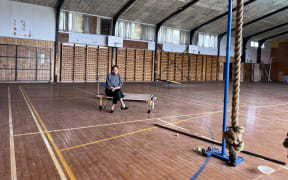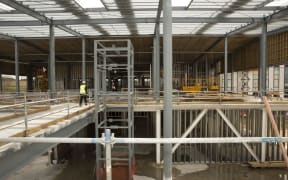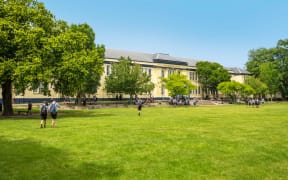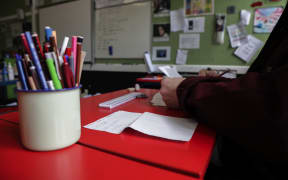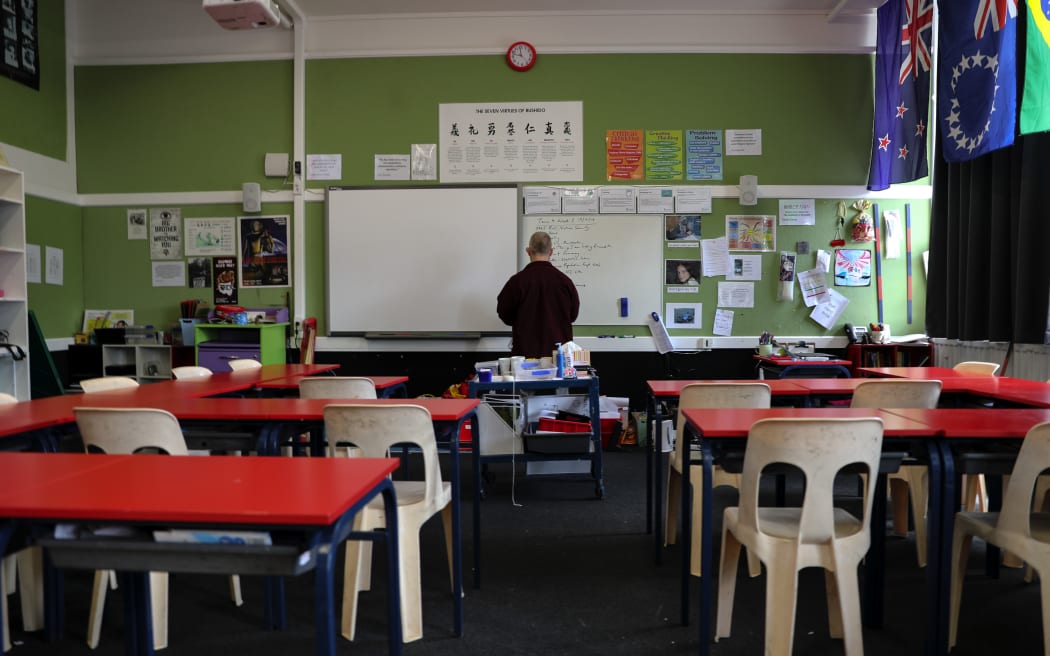
File photo. Schools are facing high upkeep costs for both old and new classrooms, principals say. Photo: RNZ / Richard Tindiller
Principals are warning the $107 million a year they get to maintain school buildings is not enough and flash new classrooms are making the problem worse.
They say recently constructed classroom blocks look great but their high facades, ventilation systems, and automatic doors and windows are expensive to fix and maintain.
At the other end of the scale, schools are facing high upkeep costs for old classrooms that principals say should have been replaced years ago.
The Ministry of Education's property head, Scotty Evans, recently told MPs at Parliament's Education and Workforce Select Committee school caretakers could not fix or maintain some aspects of newly built schools.
He said the ministry was trialling ways of making maintenance funding go further by bundling property jobs at a small group of Waikato schools.
Wellington East Girls' College principal Gael Ashworth told RNZ the upkeep costs for the school's recently constructed main block exceeded its maintenance funding by tens of thousands of dollars a year.
She said the building was great to work in, but the three-storey construction had to be cleaned by specialists and any breaks in its terracotta tiles or aluminium joinery also required specialist workers.
Automatic doors provided swipe-card access for staff after hours, but repairs and maintenance to those doors and to the locks on its heritage-protected main doors cost $17,000 in a single year, she said.
The ventilation system had to be cleaned and maintained by contractors at a cost of about $31,000 last year.
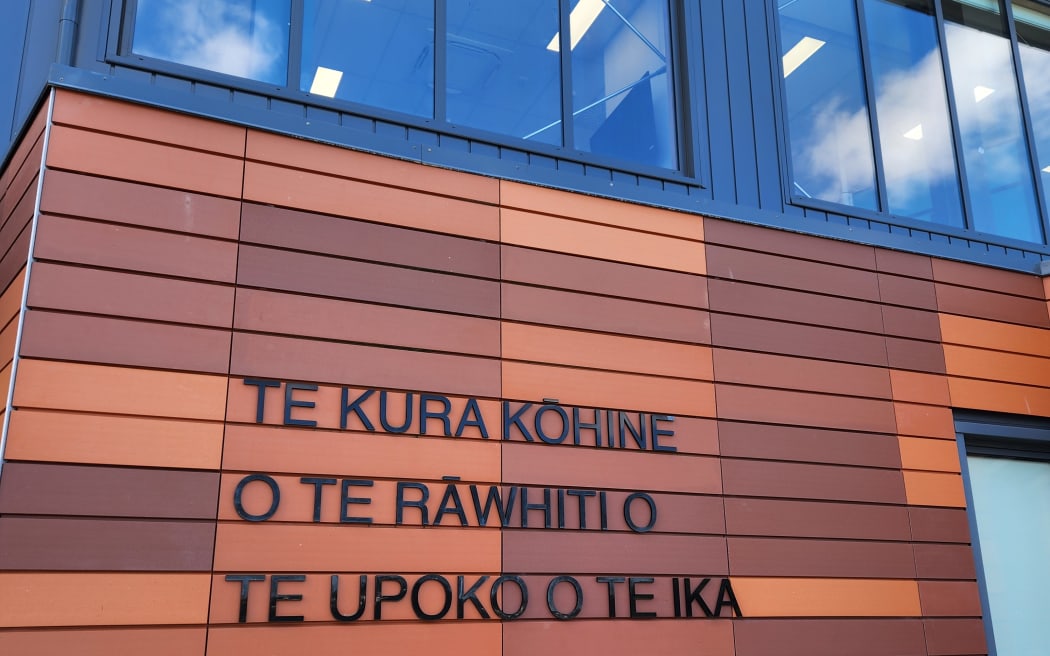
The main block at Wellington East Girls' College exceeds its maintenance funding by tens of thousands of dollars a year, its principal says. Photo: RNZ/John Gerritsen
Ashworth said the level of upkeep required to maintain warranties on the building's fixtures was well beyond what the school could afford.
She said the costs showed the property funding system was out of date.
"Our budget for property is $150,000 a year. That's based on a formula the ministry have used and I think that's where the issue is," she said.
"The formula works for a single-storey, timber facility that has opening windows, but for a site where we have a three-storey build with this complex delivery of systems then it doesn't really match... There is a mismatch between the funding model and the facilities we have to maintain and operate."
Ashworth said schools needed more funding for property upkeep.
"We've spent $31,000 on air filter maintenance, $17,000 on doors. That's getting close to $50,000 which is a third of the budget that we currently receive so maybe another 30 percent would be great," she said.
Not far away, South Wellington Intermediate School principal Toby Stokes was reviewing storm damage to his 70-year-old main block.
A recent northerly gale swung an exterior door hard enough to crack its wire-reinforced safety glass. Indoors, a wall suffered water damage due to a leak during heavy rain.
The school spent about $40,000 a year on maintenance from its operations grant and received further money from the ministry's five-year property fund for work like replacing roofing.
Stokes said the property funding was not enough.

South Wellington Intermediate School principal Toby Stokes. Photo: RNZ/John Gerritsen
"We could keep throwing massive amounts of money at the school because like I said it's 70 years old. Everything needs to be repaired, everything needs to be fixed.
"We haven't even thought about touching the paint on the school because we just don't have the funding for that."
The school board's presiding member, Mel Millington, said the intermediate needed to be rebuilt and spending money on repairs felt futile.
"The reality for SWIS is we need a new school and we're in patch mode, so we're going round patching things which is just spending money that otherwise could be spent on better things for our students," she said.
"We're making a constant trade-off between things we can do for our students and our teaching versus keeping our building upright while we hopefully wait for a new school."
Mairehau School principal John Bangma said his Christchurch school had mostly new buildings, but also some old classrooms - and both cost a lot to maintain.
"For example we've got a fantastic heat and cooling system but once it's installed we're then presented with a quote that says 'you need to maintain it every three months at a cost of $10,000'. We didn't have that cost before," he said.
"It's all those compliance costs that add up that have to be found somewhere."
Bangma said the school managed to halve the cost of maintaining the heating system by opting for six-monthly servicing with a different company.
Meanwhile, the school also had six classrooms that were constructed in 1953 with the original doors, windows and paintwork.
"The maintenance [funding] nowhere near covers it. When you're paying $50 or $70 just to get a tradesman just to come on site, that all has to be paid for and the bills just keep coming through so it's a massive expense," he said.
"The other big issue is we're trained as teachers. We didn't train as maintenance people, we're not building experts, so we need guidance in what we do and that's not my area of expertise or interest except for if it's not working and then it suddenly does become that."
Bangma said the shortfall in property funding was too depressing to dwell on, and it forced schools to use operational funding that could be used on children's learning and to postpone important work.
"In too many schools around the country the buildings are buildings but they're not keeping up with the way we're teaching. We assume that because it's a building that you can close the door, that that's enough, and it's not. It's not a stimulating environment anymore, some of them are dark and dingy, some of them are cold, all of those things.
"If there's not enough money you end up having to do the urgent and often the would-be-nice doesn't happen. And it's those would-be-nice [things] that lift the spirits of the staff and the children," he said.
The Ministry of Education said school property maintenance grants increased 3.5 percent this year and would total $107 million.
It said schools nationwide received a further $200m a year from their five-year property allocation for capital works.

